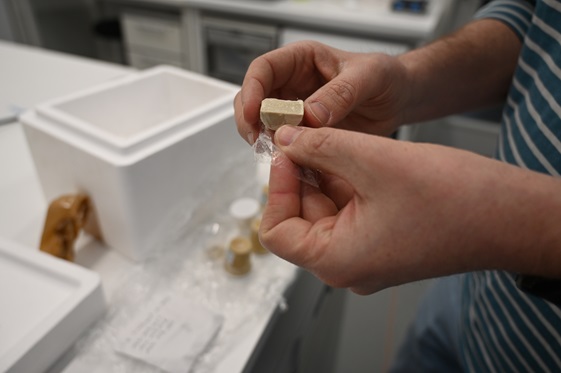
Now you can get real foie gras without force-feeding
Researchers from the Max Planck Institute and the University of Southern Denmark have developed an effective method for producing foie gras from ducks and geese that have not been force-fed. The technology is patented, and the hope for the future is that it can also be used for, for example, plant-based foods.
Imagine if you could produce foie gras from ordinary ducks and geese by adding the characteristic fattiness to the liver after the animal has been slaughtered. It would be significantly cheaper and would greatly improve animal welfare.
Now you can.
Researchers from the Max Planck Institute and the Faculty of Engineering at the University of Southern Denmark have succeeded in creating a foie gras that mimics traditional foie gras down to the microscopic level, using ducks that have only been fed a normal duck diet.

The research team has used certain enzymes, called lipases, to replicate the process that naturally occurs in the birds’ bodies to build up an extra fat layer before they migrate. The enzymes can relatively easily be added to the fat after slaughter, after which the foie gras can be made and its distinctive fat structure achieved.
- What makes foie gras special is that the fat structure on a microscopic scale doesn't form beads, as fat normally does, but rather a kind of structural scaffold. This gives a characteristic mouthfeel—something that initially resists and then completely breaks down as you move it around in your mouth, says Mathias Porsmose Clausen, associate professor in gastrophysics at the University of Southern Denmark (SDU).
Even outside the microscope, the researchers’ force-feeding-free foie gras behaves exactly like ordinary foie gras. They have, among other things, conducted pressure tests—and of course, they have tasted it themselves.
- The next step could be to conduct a proper sensory study and test it on a tasting panel, says Mathias Porsmose Clausen.
- But so far, it’s only us who have tried it, and as far as we can tell, there’s no difference in taste or texture.
Laser microscopy and sustainability
It is Mathias Porsmose Clausen and his colleagues at the Department of Green Technology at SDU who have been responsible for examining and describing the microscopic structure of the foie gras. This knowledge has been used by researchers at the Max Planck Institute, led by Thomas Vilgis, to experiment with how to recreate it using a normal duck liver.
- It’s a relatively new field—this idea of examining food and its fundamental structure and composition to understand how physics affects taste and texture. This has been made possible in part by the fact that we have acquired some highly specialised laser microscopes, says the researcher.

The ambition also extends beyond "just" being able to produce foie gras without force-feeding, explains Mathias Porsmose Clausen.
- The idea is that by understanding the physics behind some of the most delicious, distinctive or desirable food products—such as foie gras—we can use that knowledge to create new, healthier, and more sustainable plant-based foods that have the same positive qualities we know from animal products, he says.
But as things stand, there is nothing preventing the researchers’ new foie gras from making its way into supermarkets. The technology is patented, so all it requires is for a company to enter a licensing agreement and begin production.